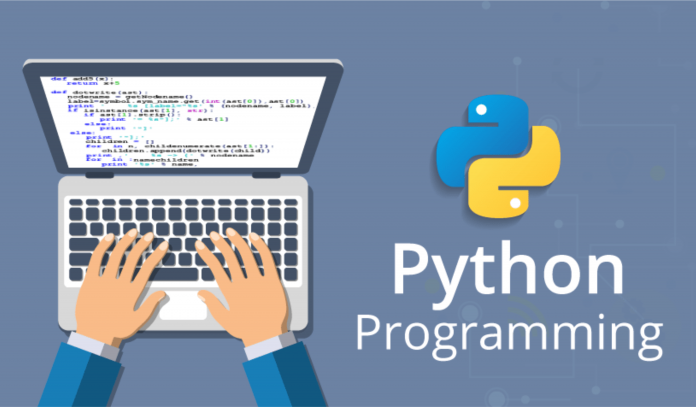Python is one of the most learned and used programming languages. It’s also the easiest to learn, as many people acquire it as an additional skill, regardless of whether they’re in computer science or not. Cyber threats have grown into an international affair, putting more limelight on the cybersecurity professionals. Python has been gaining significance for its role in cybersecurity. Its seamless scripts have contributed to automating processes as well as analyzing and testing. Python’s libraries have a variety of codes, functions, and modules that assist in building security-led programs, and in this blog, we will delve into the top Python libraries which are most commonly used by cybersecurity professionals.
What are Python Libraries?
Python libraries are pre-coded collections of code containing specialized functionality that allows the programmer to easily use the existing modules, avoiding drafting the complex algorithms from scratch. Thus, libraries provide many different functionalities like simple mathematical operations, advanced algorithms for machine learning, network programming, etc.
Code, functions, classes, and methods, all designed to solve a particular programming problem efficiently, are known as a Python library. Libraries are used in a modular form, which means that a programmer can import the required parts of the library and avoid using unnecessary memory, allowing better organization of the coded program. The number of existing and outside libraries within the Python ecosystem is very large.
Thousands of libraries, built-in and others created and maintained by a global community, exist. Libraries are distributed by package managers, while other package managers exist that provide the programmer with installed and stable libraries ready to be imported. Many libraries are built to solve specific problems that exist in the functional world, allowing programmers to rapidly develop tested, optimized, and robust code in various domains, from web development to scientific programming to AI.
The Role of Python in Cybersecurity
Python is the most used programming language when it comes to cybersecurity due to the various qualities it offers. Python is versatile and easy to work with for many programmers. It has a large library of existing codes that not just offer defensive functions but also offensive capabilities. It is the most suitable programming language for designing tools and software that provide protection from malware and detect potential threats. For students or professionals aiming to strengthen their technical understanding, seeking Python assignment help can be a great way to master its real-world applications in cybersecurity. Here’s how Python plays an integral role in offering online protection.
1. Automation
Python is a great language for automating the repetitive tasks of cybersecurity. Its simple syntax and readability lend themselves perfectly to having scripts that will automatically scan whole networks for weaknesses, scan open ports, and verify system configurations. In addition, sorting through and analyzing large volumes of security logs can be done, significantly reducing the time taken to discover potential threats. By automating these tasks, there will be a quicker response time, fewer human errors, and more consistent monitoring of systems. In addition, Python can produce in-depth reports and warnings about security considerations, allowing professionals to work on fixing things rather than having to collect data through manual monitoring.
2. Penetration Testing
Penetration testers rely heavily on Python in order to simulate actual cyber attacks and the discovery of weaknesses before they are found by the bad guys. Here, which is easily done with Python, is automating the reconnaissance duties, gathering the information on the actual target, and the desirable task of exploiting the weaknesses. A variety of popular tool points which must be employed, can use Python as an integrated feature or an extended version, thus allowing for customized attack methodology and the ability to carry out complex test scenarios. The flexibility of Python allows them to design their own testing framework for the evaluation of specific environments and security objectives.
3. Vulnerability Evaluation
Vulnerable systems are often those that are under threat or have old and obsolete software. Python is usually used to structure programs and tools that analyze these systems for these vulnerabilities. Python’s capacity to manage large datasets is also used for security data analysis, detecting patterns, and identifying vulnerabilities. Automating ticket creation and following them through ensures that problems identified are assigned quickly to the right teams for resolution.
4. Malware Research
For the dissection of malicious software, Python has the flexibility and functionality that allow for great depths of analysis. Analysts make use of Python to create custom disassemblers, debuggers, and sandboxing environments to safely observe the behavior of malicious software. Python scripts measure hidden code, decrypt files, and trace how the malicious program interacts with a system. These factors in the understanding of its goals and the establishment of valid countermeasures.
5. Web Application Security
Much of its role in ensuring security for web applications is filled by Python. Frameworks such as Django and Flask allow developers of applications to create applications that have strong security features, including validation of input and built-in protection against usual attacks such as Cross-site scripting and SQL injection. Python libraries such as Requests and Beautiful Soup are used for web scraping and vulnerability probing as well. Security testers can automate checks for weaknesses in a variety of ways, including flaws in authentication systems and session management, and data issues within web apps.
6. Data Analysis and Machine Learning
Cybersecurity generates enormous volumes of data daily. Data analysis is a big part of what Python does well. There are a lot of different tools for doing data analysis, like Pandas and NumPy, which allow the expert to quickly and accurately process and analyze the information derived from this. By recognizing unusual or suspicious activity, the analyst will be able to anticipate and prevent attacks. Python is also used to develop machine learning models, which would indicate threat detection, malware classification, and so on. This always tends to make the attacks smarter, faster, and more accurate.
7. Intrusion Detection Systems (IDS)
Intelligent intrusion detection systems are often developed in Python to allow for constant monitoring of the network traffic for anomalies. Dpkt and Scapy are Python libraries that allow users to capture and analyze packets on the network in real time for all users. These systems can automatically flag suspicious activities such as foul access attempts and data leaks, thereby allowing an organization to break through the defenses of its network before major breaches occur.
8. Secure Development
The security of the developed software is a crucial part of the intricacies of cybersecurity, and Python assists the developers greatly in providing secure software code. This language has a large variety of libraries and frameworks that lend themselves readily to allowing for validation and sanitization of user input throughout any programs written in it. This minimizes such risks as SQL injection and command injection.
Python, with its very broad spectrum of testing tools, also allows for simulated attacks to indicate any potential breaches that might occur, or perhaps also if the system complies with security features to limit attack patterns based on the latest best security practices in use.
Whether you’re a scholar or a working professional, you can gain great insight through learning Python’s role in creating security barriers. You can understand the role of libraries and install them for your coursework or projects, or simply get Python help from online agencies that have expert coders.
Top Libraries of Python for Cybersecurity
To help make coding for cybersecurity easier for you, here are some libraries specific to each function you may need them for:
Automation and Scripting
Modern cybersecurity includes automation as one of its foundations. The automation libraries in Python enable practitioners to deal with tedious processes like log analysis, system monitoring, and vulnerability scanning.
- Paramiko: It is utilized to automate SSH server connections and execute commands remotely in a secure way over a number of servers.
- Fabric: Makes it easier to manage the network, this is because it automates the deployment process, system updates, and configuration processes.
- PyAutoGUI: It allows performing tasks that require navigating the interface or testing applications that do not have APIs through automation of the GUI.
- Schedule: Assists in scheduling and executing the repetitive activities in cybersecurity, such as scanning or gathering logs, at a given frequency.
- Requests: This is ideal to automate HTTP requests, which are handy in the process of testing a web and monitoring API-based systems.
Penetration Testing
Python libraries enable penetration testers to replicate attacks, exploit vulnerabilities, and efficiently gather reconnaissance data.
- Scapy: A high-quality library for the creation, transmission, and reception of network packets. It is necessary for sniffing, spoofing, and scanning.
- Impacket: It offers access to low-level network protocols, such as SMB and MSRPC, and can be useful for exploiting and gaining privileges.
- Pwntools: An exploit development and framework of CTF that assists in automating exploit development and binary analysis.
- Socket: This is a Python library of low-level network communication- used to develop custom network tools.
- Nmap: Builds upon the popular Nmap tool and uses it with Python to auto-scan the network and analyze it.
Vulnerability Testing and Analysis
In determining areas of weakness in networks or applications, Python provides specialized libraries that make vulnerability analysis systematic and efficient.
- Vulners: The publicly accessible database of Vulners contains a vast number of vulnerabilities that can be incorporated into scripts and tools.
- OpenVAS API: Interfaces with the OpenVAS scanners to automate the vulnerability scanning and reporting process.
- Requests + BeautifulSoup: The two will help automate web scraping and testing of web pages to determine whether it is vulnerable.
- Wapiti: A web vulnerability crawler that detects such types of vulnerabilities as XSS, file disclosure, and SQL injection.
Conclusion
Cybersecurity has become an integral need for every business, organization, and even the whole country. The privacy and security of data have become a main concern globally. Cybersecurity professionals use the Python language to code tools and software due to its versatility and the Python libraries. The libraries mentioned above each contain specific codes to perform functions needed to run smooth security. Utilizing these, a programmer can code efficiently without having to structure the complex modules from scratch.


